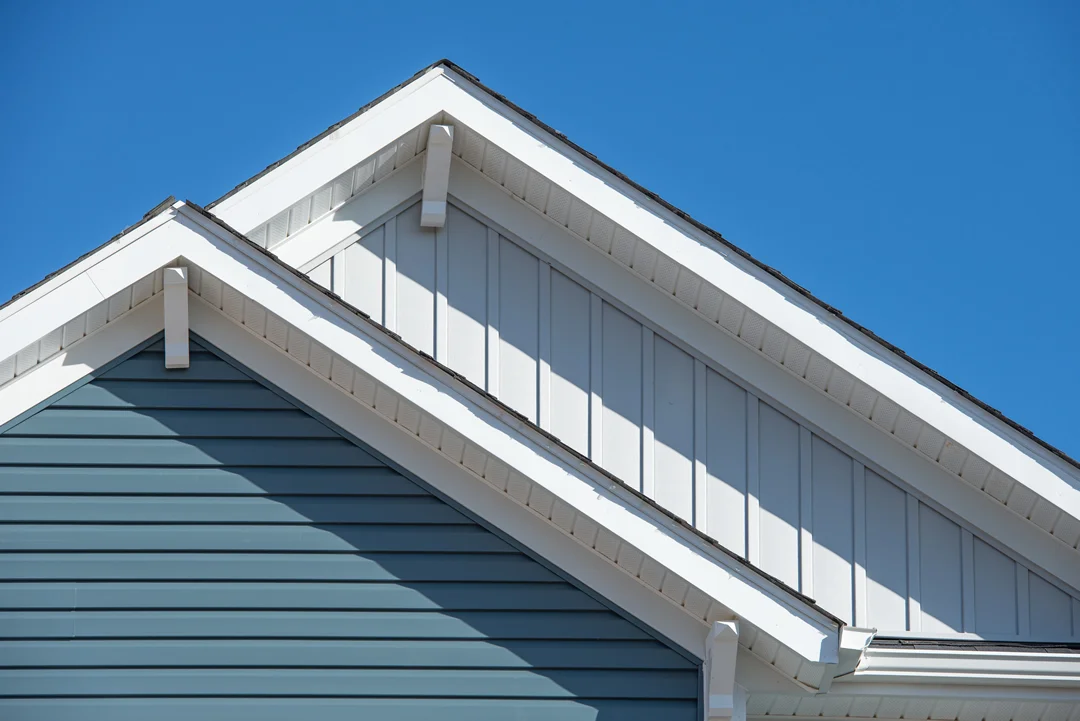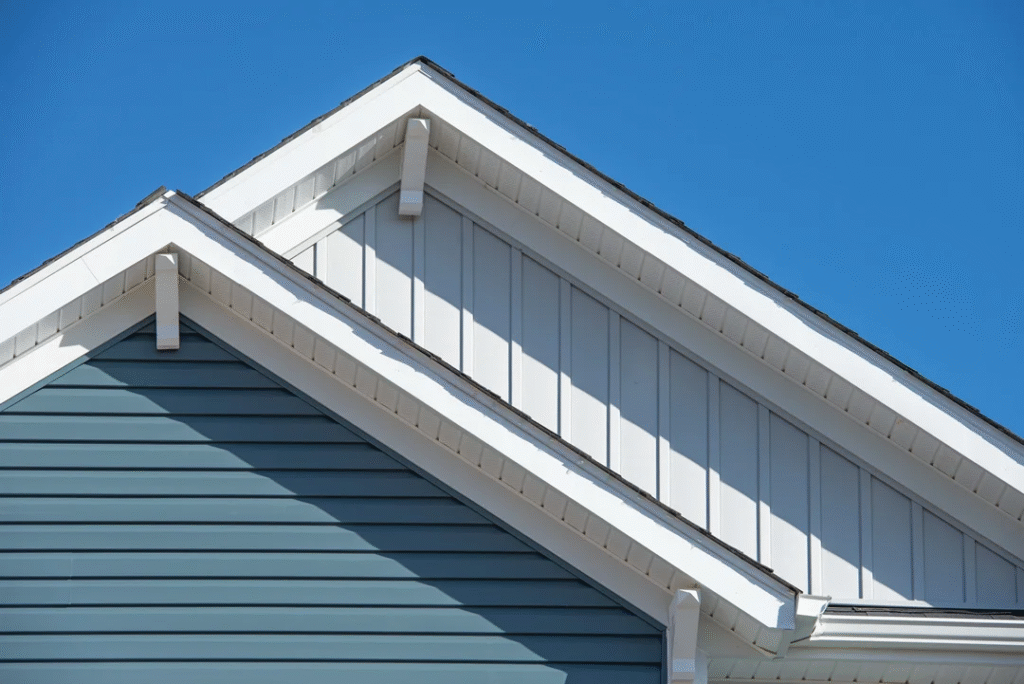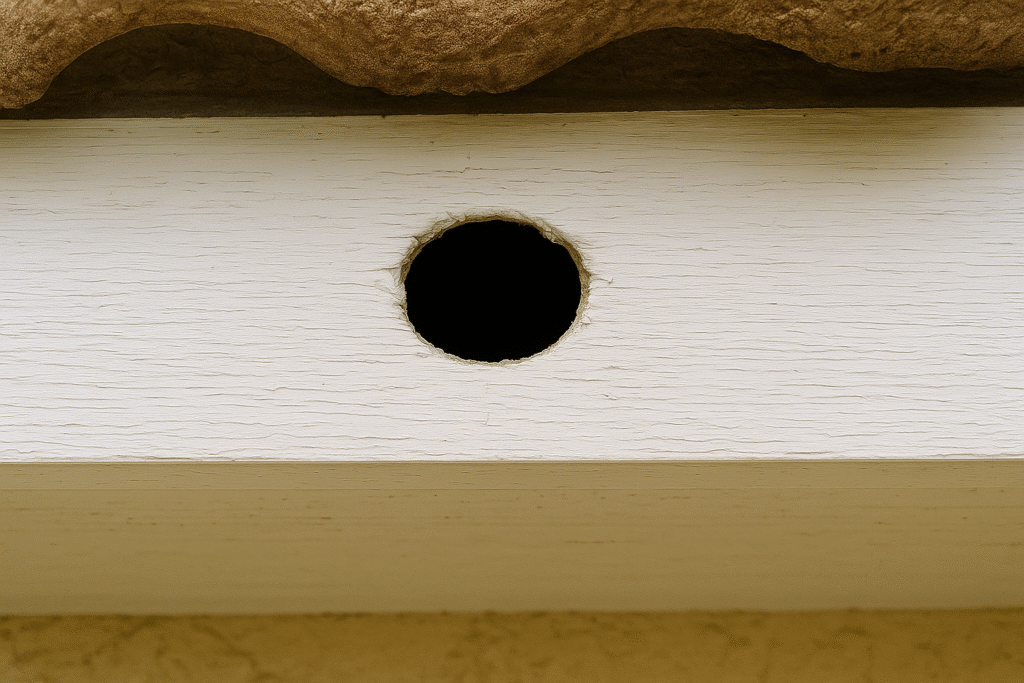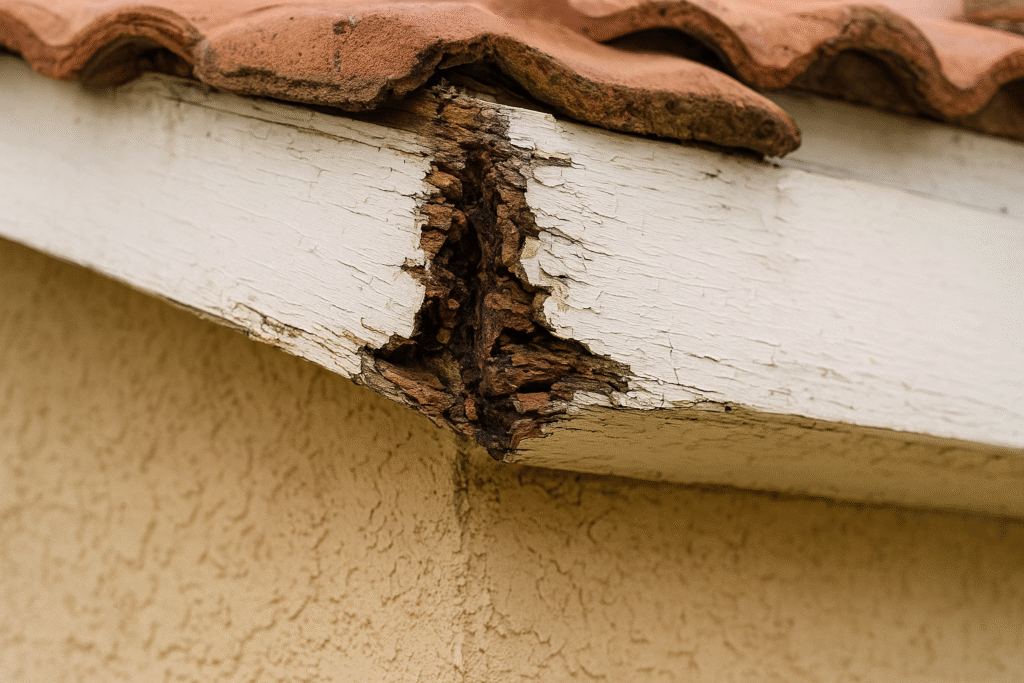
A Homeowner’s Guide to Fascia and Soffit Maintenance
Roofing
October 15,2025

Have you noticed peeling paint along your roofline or a small hole in the panels under your eaves? In Florida’s harsh climate, these minor issues can quickly become major problems. The good news is that many fascia and soffit repairs are manageable for homeowners who know when to act.
At FoxHaven Roofing, we believe in empowering homeowners with clear, reliable information. Let’s explore what fascia and soffit are, why they matter, and how you can keep them protecting your home.
What Are Fascia and Soffit?
Think of fascia and soffit as your roof’s first line of defense. The fascia is the vertical board that runs along the edge of your roof, right where your gutters are mounted. The soffit is the panel underneath the roof’s overhang, which often contains small vents to help your attic breathe. Together, they seal off the roof structure from rain, pests, and humidity.
Why Do Fascia and Soffit Fail in South Florida?
South Florida’s climate is uniquely harsh on roofing systems. Your roof endures a daily cycle of intense sun that can heat surfaces to over 150°F, followed by rapid cooling from afternoon thunderstorms. This constant expansion and contraction—a process called thermal shock—strains materials, causing fascia to warp and soffit to crack over time.
Key Term: Thermal ShockThermal shock is the stress put on roofing materials when they rapidly expand in the intense Florida sun and then contract during a sudden cool-down from a rainstorm. This cycle is a leading cause of cracks, warping, and premature failure.
Beyond thermal stress, water is a primary culprit. Clogged or overflowing gutters frequently cause rainwater to saturate wood fascia, leading to rot. This is compounded by South Florida’s high humidity, which traps moisture under the eaves and accelerates wood decay. Physical damage is also a constant threat. During hurricane season, wind-driven rain and flying debris can easily puncture soffit panels. Furthermore, homes in coastal communities face the added challenge of corrosive salt air, which speeds up the deterioration of metal fasteners and components.
How Do You Repair a Small Hole in Your Soffit?

Finding a small hole from storm debris or pests is common. Here’s how to fix it step-by-step:
- Clean and Prep: Clean the area around the hole and remove any loose or crumbling material.
- Cut a Patch: Cut a patch from a matching soffit panel, ensuring it is slightly larger than the damaged area.
- Apply Adhesive: Apply an exterior-grade adhesive or caulk around the hole’s edges.
- Set the Patch: Press the patch firmly into place.
- Seal the Edges: Seal the entire perimeter of the patch with a durable, climate-rated exterior caulk to create a watertight barrier.
FoxHaven Tip: For holes larger than six inches, we recommend replacing the entire soffit panel. Patching a large gap can compromise ventilation and won’t provide the same long-term protection.
Can You Replace a Damaged Fascia Board Yourself?
Yes, if you’re experienced with basic carpentry and prioritize safety, this is a manageable DIY project. You’ll need a sturdy ladder, a pry bar, a saw, and galvanized exterior screws.
The process involves carefully removing the gutter section, prying off the old board, and inspecting the exposed rafter ends for rot. If the rafters are solid, you can measure and cut a new board, secure it firmly, and reattach the gutter.
Safety First: If you discover rot in the underlying rafter ends, are working on a second story, or feel uncomfortable at heights, stop and call a professional. Structural integrity and your personal safety are top priorities.
How Do You Fix Rotted Fascia Board Corners?

Corners are high-risk areas where gutters meet and water can pool. For minor rot, you can scrape away the soft wood, treat the area with a wood hardener, and fill it with an exterior wood filler before sanding and painting.
For severe separation or widespread rot, the entire corner section must be replaced. This involves cutting back both boards and installing new pieces with a strong, sealed miter joint. This is a critical repair, as failed corners are a primary entry point for water that can damage your home’s framing.
Prevention Tip: Most fascia corner rot starts with overflowing gutters. Ensure your gutters are clean and sloped correctly so water flows away from corners, not over them.
When Should You Call for Professional Help?
Knowing when to tackle a repair yourself and when to call in an expert is key to protecting your home. While many small repairs are DIY-friendly, certain signs point to a deeper issue that requires a professional assessment. Use this guide to help you decide.
| DIY-Friendly Repairs | Signs You Need a Professional |
| Patching small holes (under 6 inches) in soffit panels. | Rot that has spread into the roof decking or structural rafters. |
| Treating small, localized spots of wood rot on a single fascia board. | Multiple sections of damaged fascia or soffit across your roofline. |
| Replacing a single, easily accessible fascia board on a first-story home. | Fascia boards that are sagging or pulling away from the house, indicating a structural issue. |
| Repainting or re-sealing existing fascia and soffit. | Any damage on a second story or in a location you cannot safely access. |
A professional inspection can determine the root cause of the failure—whether it’s a ventilation issue, a hidden roof leak, or simply age. This ensures you’re fixing the problem, not just the symptom.
Protect Your Home with Proactive Maintenance
Your fascia and soffit are critical components of your roofing system. Regular inspections and timely maintenance are the most effective ways to protect your investment and avoid the major repairs that come from neglect.
At FoxHaven Roofing, we provide thorough inspections that give homeowners a clear picture of their roof’s health. Whether you need guidance on a repair or a professional replacement, our team is here to help you make an informed decision.
Ready for a professional assessment? Contact FoxHaven Roofing today for a free, no-obligation inspection.

